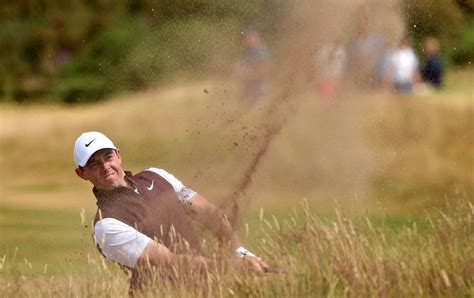
Kevin McHale believes the emphasis on weightlifting in modern basketball has led to a more robotic style of play, contrasting sharply with the more intuitive and free-flowing game of Larry Bird’s era. McHale suggests that while today’s players are undoubtedly stronger and more athletic, the focus on structured physical training may have diminished the creativity and instinctual play that characterized the Celtics teams of the 1980s.
Former Boston Celtics star Kevin McHale recently offered a unique perspective on the evolution of basketball, suggesting that the modern emphasis on weightlifting and physical conditioning has inadvertently made players more “robotic” compared to the stars of Larry Bird’s era. McHale, a Hall of Famer known for his finesse and post moves, argues that while today’s players are undoubtedly more physically imposing, the structured approach to training may have come at the expense of the creativity and instinctual play that defined the game in the 1980s.
“Everybody is bigger, stronger, faster, jumping higher – but is it really basketball?” McHale questioned in a recent interview. He elaborated on his point by contrasting the training regimens of his time with those of today. In the 1980s, players focused more on honing their skills and developing a feel for the game, whereas modern training programs often prioritize weightlifting and specific athletic drills.
McHale’s comments sparked a debate among basketball fans and analysts, with some agreeing that the game has become overly reliant on athleticism and structured plays, while others maintain that the increased physicality has simply raised the overall level of competition.
The debate centers on the balance between physical preparation and basketball IQ. McHale contends that the relentless pursuit of physical perfection can sometimes overshadow the importance of court awareness, passing ability, and the ability to make split-second decisions based on instinct and feel. He pointed to Larry Bird as the epitome of a player who relied more on his basketball intelligence and skills than sheer physical dominance.
“Larry wasn’t jumping over anybody,” McHale said. “He wasn’t the fastest guy, but his mind was incredible.”
McHale’s perspective isn’t just a nostalgic longing for the past; it raises important questions about the direction of basketball training and development. Are young players being taught to rely too much on their physical attributes, or are they also developing the mental acuity and skills necessary to excel at the highest level? This is a question that many coaches, trainers, and players are grappling with as they seek to optimize performance in an increasingly competitive landscape.
To understand McHale’s viewpoint fully, it’s essential to examine the historical context of basketball training. In the 1980s, training methods were less scientific and data-driven than they are today. Players often relied on a combination of practice games, individual workouts focused on skill development, and a more relaxed approach to physical conditioning. Weightlifting was not as integral to the training process as it is now.
The shift towards more intensive physical training began in the 1990s and accelerated in the 2000s, driven by advances in sports science and a growing emphasis on injury prevention. Teams began to employ specialized strength and conditioning coaches who designed customized training programs for each player, focusing on building strength, increasing explosiveness, and enhancing overall athletic performance.
This transformation has undoubtedly produced athletes who are bigger, stronger, and faster than their predecessors. However, McHale and others argue that it may have also led to a more homogenized style of play, where players are encouraged to fit into a specific mold rather than develop their unique skills and instincts.
One of the key differences between the eras, according to McHale, is the level of freedom and creativity that players are allowed to express on the court. In the 1980s, players had more autonomy to make decisions and improvise based on the flow of the game. Coaches provided guidance and structure, but they also encouraged players to trust their instincts and take risks.
In contrast, modern basketball often features more scripted plays and a greater emphasis on adhering to a predetermined game plan. While this approach can lead to more efficient offense and better defensive rotations, it may also stifle creativity and reduce the opportunity for players to showcase their individual flair.
McHale’s critique also touches on the role of specialization in modern basketball. As the game has become more complex, players are often encouraged to focus on specific roles and skill sets. While specialization can be beneficial in terms of maximizing efficiency, it may also limit the development of well-rounded players who can contribute in multiple ways.
In the 1980s, it was more common for players to possess a wider range of skills and be able to play multiple positions. This versatility allowed teams to be more adaptable and unpredictable, making it more difficult for opponents to game-plan against them.
The impact of weightlifting on shooting mechanics is another area of concern for some observers. While increased strength can undoubtedly improve a player’s ability to absorb contact and finish at the rim, it may also lead to changes in shooting form that can negatively affect accuracy. Some players may become overly reliant on their upper body strength, resulting in a push shot that lacks fluidity and touch.
McHale’s comments resonate with a broader discussion about the evolving nature of sports training and the potential drawbacks of over-specialization. The pursuit of peak physical performance is undoubtedly important, but it should not come at the expense of fundamental skills, basketball IQ, and the ability to think creatively on the court.
The statistics of both eras paint an interesting picture. Modern NBA players generally exhibit higher field goal percentages and three-point percentages compared to players from the 1980s. This could be attributed to improved shooting techniques, better spacing on the court, and the increased emphasis on three-point shooting. However, assist numbers were generally higher in the 1980s, suggesting a more team-oriented style of play with greater ball movement.
Ultimately, the debate over the impact of weightlifting on basketball comes down to a question of balance. While physical strength and conditioning are undoubtedly important components of success in the modern NBA, they should not overshadow the importance of skill development, basketball IQ, and the freedom to express creativity on the court. As the game continues to evolve, coaches and trainers must find ways to integrate physical training with skill development in a way that maximizes both individual and team performance. McHale’s observations serve as a valuable reminder that the human element of basketball – the instincts, creativity, and feel for the game – should not be sacrificed in the pursuit of physical perfection.
The discussion triggered by McHale’s comments extends beyond just weightlifting to the overall structure of youth basketball development. The AAU (Amateur Athletic Union) system, which dominates youth basketball in the United States, has come under scrutiny for its focus on showcase events and individual performance rather than fundamental skill development and team play. Critics argue that the AAU system encourages young players to prioritize scoring points and impressing scouts over learning the nuances of the game and developing a strong basketball IQ.
This emphasis on individual performance can also lead to a lack of creativity and improvisation on the court. Players who are constantly focused on scoring points may be less likely to pass the ball to an open teammate or take a risk with a creative play. This can ultimately hinder their development as well-rounded basketball players.
The European model of basketball development, which emphasizes fundamental skill development, team play, and tactical understanding, is often cited as an alternative to the AAU system. In Europe, young players typically spend more time working on their skills and learning the fundamentals of the game before they begin to focus on individual performance. This approach is believed to produce players who are more skilled, more versatile, and have a higher basketball IQ.
McHale’s critique also resonates with concerns about the growing influence of analytics in basketball. While analytics can provide valuable insights into player performance and team strategy, some argue that they can also lead to a more rigid and predictable style of play. Coaches may become overly reliant on data and less willing to trust their players’ instincts and creativity.
The challenge for coaches and trainers is to find a way to use analytics to enhance performance without sacrificing the human element of the game. They need to be able to identify areas where players can improve based on data, but they also need to empower players to make their own decisions on the court and trust their instincts.
McHale’s perspective offers a valuable counterpoint to the prevailing narrative in modern basketball, which often emphasizes physical dominance and statistical analysis. He reminds us that the game is ultimately about more than just athleticism and numbers. It’s about creativity, instinct, and the ability to think and react in real-time.
While the game has undoubtedly changed since the 1980s, McHale’s message remains relevant. The key to success in basketball, as in any endeavor, is to find a balance between preparation and improvisation, between structure and freedom. By embracing both the physical and mental aspects of the game, players can reach their full potential and help to preserve the beauty and artistry of basketball.
Furthermore, the relentless focus on immediate success in the NBA, driven by lucrative contracts and intense media scrutiny, can also contribute to the homogenization of playing styles. Players are often under pressure to conform to a specific role or system in order to maximize their value and ensure their longevity in the league. This can stifle creativity and discourage players from taking risks that might deviate from the established norms.
The pressure to perform at a high level from a young age can also lead to burnout and a lack of passion for the game. Players who are constantly pushed to their limits may lose their love of the game and become more focused on the business aspects of basketball. This can ultimately diminish their creativity and reduce their willingness to take risks on the court.
To address these concerns, it’s essential to create a more supportive and nurturing environment for young players. Coaches and trainers should focus on developing the whole person, not just the athlete. They should encourage players to pursue their passions, develop their creativity, and cultivate a lifelong love of the game.
The discussion surrounding McHale’s comments also highlights the importance of diversity in basketball. The game is enriched by the contributions of players from different backgrounds, cultures, and playing styles. A homogenized style of play can stifle this diversity and make the game less interesting and exciting.
To promote diversity in basketball, it’s essential to create opportunities for players from all backgrounds to participate and succeed. This includes providing access to quality coaching and training, as well as ensuring that players are evaluated based on their skills and potential, not just their physical attributes.
McHale’s remarks also touch upon the changing nature of leadership in the NBA. In the 1980s, teams often had strong, vocal leaders who held their teammates accountable and set the tone for the team. These leaders were often veteran players who had earned the respect of their teammates through their performance and their character.
In the modern NBA, leadership is often more distributed and less vocal. Teams may have multiple leaders who contribute in different ways, but the emphasis is often on collaboration and consensus-building rather than top-down authority. This can be effective in creating a positive team environment, but it can also lead to a lack of accountability and a reluctance to confront difficult issues.
To foster effective leadership in the modern NBA, it’s essential to identify and develop players who possess the qualities of leadership, such as integrity, empathy, and the ability to inspire others. These players should be given opportunities to lead and empowered to make decisions that benefit the team.
Ultimately, the debate over the impact of weightlifting and other training methods on basketball is a complex one with no easy answers. The game is constantly evolving, and what works in one era may not work in another. The key is to remain open to new ideas and approaches while also preserving the fundamental values that make basketball such a great sport. McHale’s perspective serves as a valuable reminder that the human element of basketball – the instincts, creativity, and feel for the game – should not be sacrificed in the pursuit of physical perfection or statistical optimization. The goal should be to find a balance between physical preparation, skill development, and mental acuity that allows players to reach their full potential and contribute to the success of their teams. This requires a holistic approach to player development that takes into account not only the physical aspects of the game but also the mental, emotional, and social aspects. By focusing on the whole person, coaches and trainers can help to create players who are not only skilled and athletic but also intelligent, creative, and passionate about the game. This will ensure that basketball continues to thrive and evolve in a way that preserves its beauty, artistry, and excitement for generations to come.
The modern NBA is undoubtedly more athletic and physically demanding than the game of the 1980s. Players are bigger, stronger, and faster, and they are required to cover more ground on both offense and defense. This increased athleticism has led to a more fast-paced and dynamic style of play, with more emphasis on transition offense and perimeter shooting.
However, some observers argue that this increased athleticism has come at a cost. They contend that the focus on physical attributes has led to a decline in fundamental skills, such as passing, shooting, and dribbling. They also argue that the game has become more individualistic, with less emphasis on team play and ball movement.
McHale’s comments echo these concerns. He suggests that the emphasis on weightlifting and other physical training methods has led to a more robotic style of play, where players are less able to think creatively and react instinctively. He argues that the players of Larry Bird’s era were more skilled and more versatile, and that they were able to play with more freedom and creativity.
Whether or not McHale’s assessment is accurate is a matter of debate. There is no doubt that the game has changed significantly since the 1980s, and that the modern NBA is a more athletic and physically demanding league. However, it is also true that there are still many highly skilled and creative players in the NBA today.
Ultimately, the success of a basketball team depends on a variety of factors, including talent, coaching, chemistry, and luck. Physical attributes are important, but they are not the only thing that matters. A team with great athleticism but poor skills and teamwork is unlikely to be successful. Conversely, a team with great skills and teamwork but poor athleticism may struggle to compete against more athletic opponents.
The key to success in the modern NBA is to find a balance between athleticism, skills, and teamwork. Teams need to have players who are physically capable of competing at the highest level, but they also need to have players who are skilled, intelligent, and able to work together effectively.
As the game continues to evolve, coaches and trainers will need to find new ways to develop players who possess both the physical and mental attributes necessary to succeed. This will require a holistic approach to player development that takes into account not only the physical aspects of the game but also the mental, emotional, and social aspects.
By focusing on the whole person, coaches and trainers can help to create players who are not only skilled and athletic but also intelligent, creative, and passionate about the game. This will ensure that basketball continues to thrive and evolve in a way that preserves its beauty, artistry, and excitement for generations to come.
Frequently Asked Questions (FAQ)
1. What is Kevin McHale’s main argument about the impact of weightlifting on modern basketball players?
Kevin McHale argues that the increased emphasis on weightlifting in modern basketball has made players more “robotic” compared to the players of Larry Bird’s era, suggesting that while modern players are physically stronger, they may have lost some of the creativity and instinctual play that characterized the game in the 1980s. He believes the focus on structured physical training has overshadowed the development of court awareness, passing ability, and quick decision-making based on feel.
2. How did training regimens differ in Larry Bird’s era compared to today’s NBA?
In Larry Bird’s era (the 1980s), training focused more on honing skills and developing a feel for the game. Players relied on practice games, individual skill workouts, and a less rigorous approach to physical conditioning. Weightlifting was not as integral to the training process. Today, training programs prioritize weightlifting, specific athletic drills, and are more data-driven, aiming to maximize strength, explosiveness, and athletic performance.
3. What are some potential drawbacks of overemphasizing physical training in basketball, according to McHale’s perspective?
According to McHale, overemphasizing physical training may lead to a homogenization of playing styles, where players are encouraged to fit into a specific mold rather than develop their unique skills and instincts. It may also stifle creativity and reduce the opportunity for players to showcase their individual flair. Additionally, it can potentially negatively affect shooting mechanics, making players overly reliant on upper body strength.
4. How does the AAU system of youth basketball development contribute to the issues raised by McHale?
The AAU system is criticized for its focus on showcase events and individual performance rather than fundamental skill development and team play. Critics argue that it encourages young players to prioritize scoring points and impressing scouts over learning the nuances of the game and developing a strong basketball IQ, potentially hindering the development of well-rounded players and fostering a less creative style of play.
5. What are the key elements needed to strike a balance between physical preparation and other aspects of basketball development, according to the article?
The article emphasizes the importance of finding a balance between physical preparation, skill development, and basketball IQ. Coaches and trainers must integrate physical training with skill development in a way that maximizes both individual and team performance. This requires a holistic approach to player development that considers the mental, emotional, and social aspects of the game, allowing players to reach their full potential and contribute to the success of their teams while preserving the beauty and artistry of basketball.









